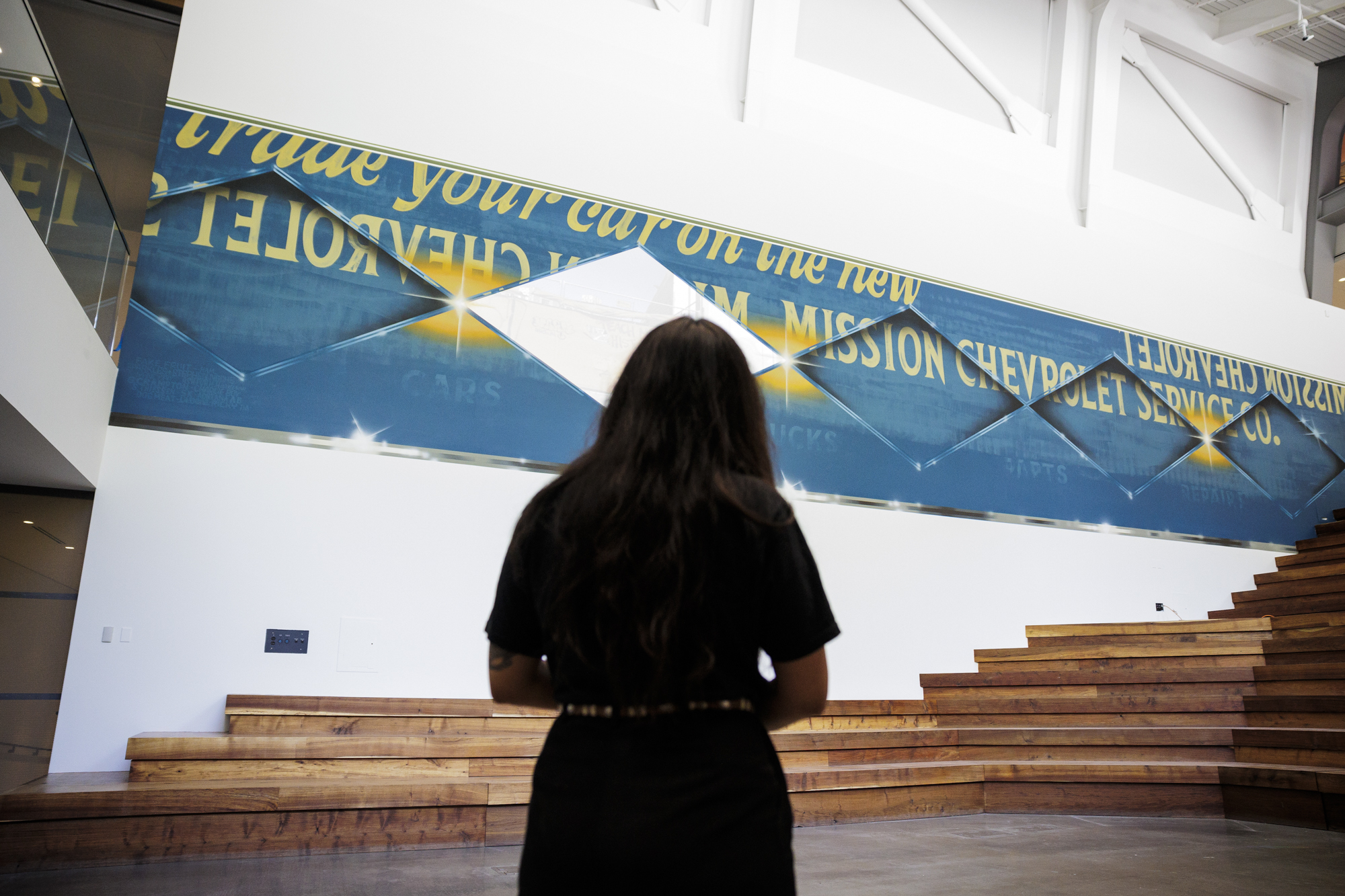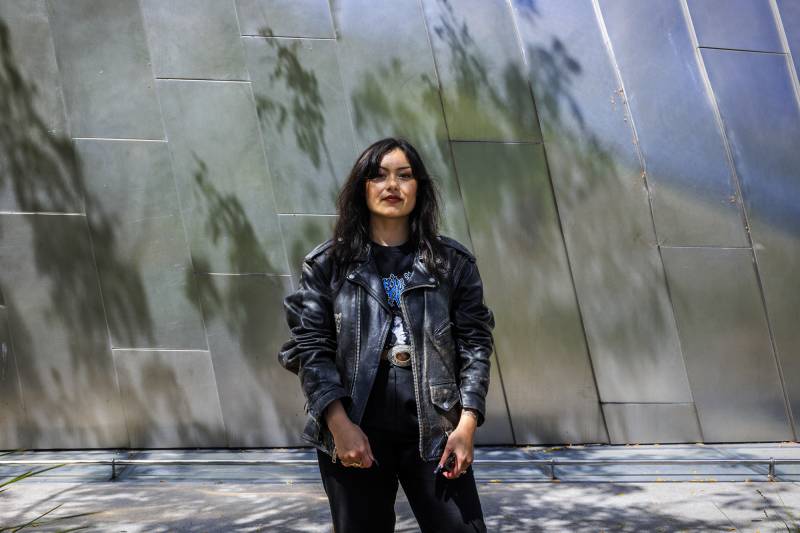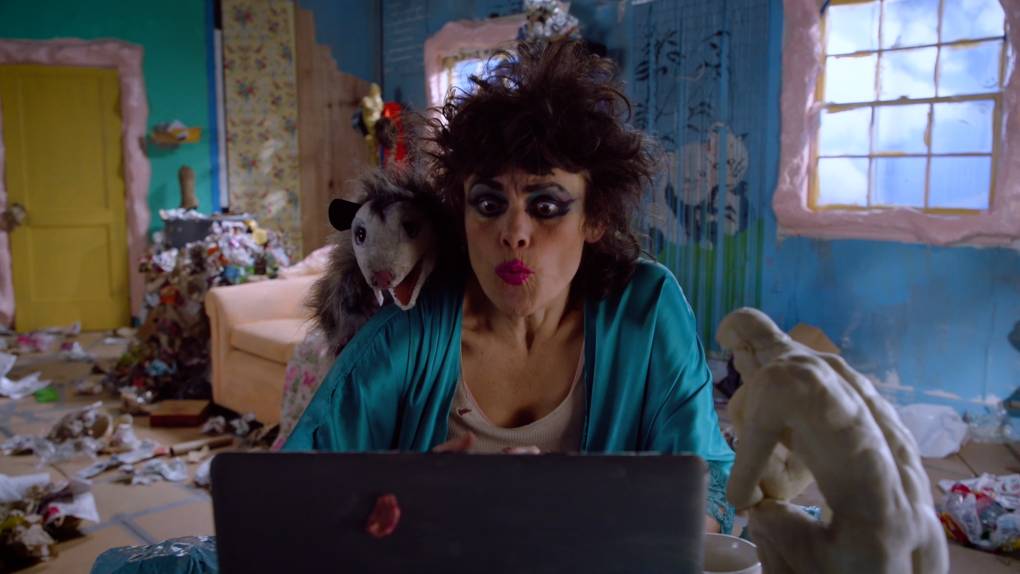Rose D’Amato shows me a photograph she took of a recently uncovered sign, hand-painted in the 1930s, advertising six-cylinder Chevrolets on what used to be the Mission Chevrolet Co. building. In the picture, a pool of water in the neighboring construction site doubles the wall, reflecting the painting back upon itself.
“I went over the other day and someone had tagged ‘teach more history,’” says D’Amato, who is taking a break from working on her large-scale mural at the Berkeley Art Museum and Pacific Film Archive, aptly titled Mission Chevrolet. D’Amato’s Art Wall will be on view Aug. 7–Dec. 15, 2024.
She directs my attention to a video feed projected over a portion of her stenciled plans to recreate the Chevrolet sign on BAMPFA’s wall. Super 8 footage, shot by the artist, slowly excavates the now-weathered Chevrolet Six sign, layering the present and its jumbled context on her reconstruction of the sign’s past.
“This 100-year-old billboard just got exposed, and on the other side of the city kids are burning down Waymos,” D’Amato says. “Getting confronted by this huge image from the past puts this all in perspective.”
In her work, D’Amato takes that “history” tag to heart. Her paintings show a reverence for San Francisco’s past by recreating and preserving ephemeral vestiges of place. But she also embraces the live, undulating context of the city’s present. It’s an approach few pull off quite as well: honoring the past without bending to nostalgia.

The language of landscape
Rose D’Amato (who formerly worked under the name Lauren D’Amato) has called San Francisco home for the past 12 years.









